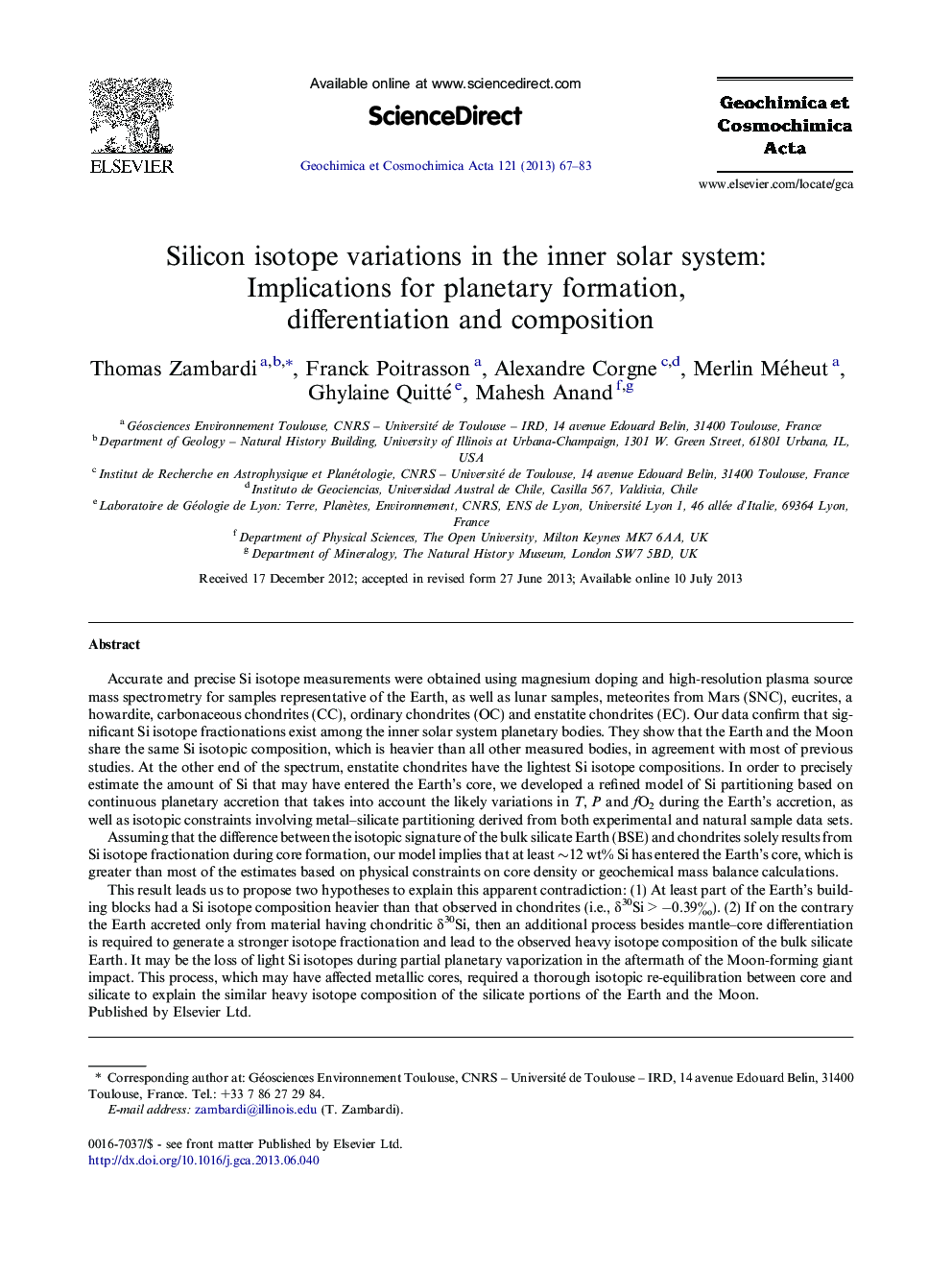| Article ID | Journal | Published Year | Pages | File Type |
|---|---|---|---|---|
| 6438892 | Geochimica et Cosmochimica Acta | 2013 | 17 Pages |
Abstract
This result leads us to propose two hypotheses to explain this apparent contradiction: (1) At least part of the Earth's building blocks had a Si isotope composition heavier than that observed in chondrites (i.e., δ30Si > â0.39â°). (2) If on the contrary the Earth accreted only from material having chondritic δ30Si, then an additional process besides mantle-core differentiation is required to generate a stronger isotope fractionation and lead to the observed heavy isotope composition of the bulk silicate Earth. It may be the loss of light Si isotopes during partial planetary vaporization in the aftermath of the Moon-forming giant impact. This process, which may have affected metallic cores, required a thorough isotopic re-equilibration between core and silicate to explain the similar heavy isotope composition of the silicate portions of the Earth and the Moon.
Related Topics
Physical Sciences and Engineering
Earth and Planetary Sciences
Geochemistry and Petrology
Authors
Thomas Zambardi, Franck Poitrasson, Alexandre Corgne, Merlin Méheut, Ghylaine Quitté, Mahesh Anand,
